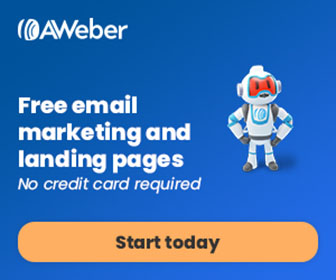How Can I Use Blogging to Monetize with Affiliate Marketing?
Affiliate marketing is one of the most accessible ways to make income online.
The only way you’re going to get people to make purchases of the products and services you recommend is by building trust with them.
Blogging is a fantastic way to build an audience that knows you and trusts you. Every time you make a product recommendation, they’ll be more likely to make a purchase.
You are creating a platform that builds trust, engages readers, and converts them into paying customers.
Here’s a step-by-step guide to help you effectively use blogging to monetize with affiliate marketing:
1. Understand the Basics of Affiliate Marketing
Affiliate marketing involves promoting products or services from other companies and earning a commission for each sale made through your unique affiliate link. Blogging provides an ideal platform to share your insights, educate your audience, and naturally incorporate affiliate links into your content.
2. Choose a Profitable Niche
Success starts with selecting a niche that aligns with your interests, expertise, and market demand. A profitable niche should:
- Solve a problem or fulfill a need.
- Have a large audience that is actively searching for solutions to issues within that niche.
- Offer a range of products/services to promote.
For example, niches like health, personal finance, technology, and travel often perform well.
3. Set Up Your Blog
Create a professional and user-friendly blog by:
- Choosing a domain name: Pick a name that reflects your niche and is easy to remember.
- Selecting a hosting provider: Reliable hosting ensures your blog is fast and always accessible.
- Installing a CMS (Content Management System): WordPress is a popular option due to its flexibility and vast range of plugins.
- Customizing your design: Use a clean, responsive theme that enhances readability and user experience.
4. Create High-Quality Content
Content is the backbone of your blog. Focus on:
- Value-driven posts: Address your audience’s pain points and provide actionable solutions.
- SEO optimization: Research keywords relevant to your niche and incorporate them naturally to rank higher on search engines.
- Content types: Mix tutorials, reviews, comparisons, and listicles to keep your blog engaging.
5. Join Affiliate Programs
Sign up for affiliate programs that align with your niche and resonate with your audience. Popular options include:
- Amazon Associates
- ShareASale
- ClickBank
- CJ Affiliate
- Direct affiliate programs from brands in your industry
6. Strategically Insert Affiliate Links
Embed affiliate links naturally within your content. Avoid overloading your posts with links; instead, focus on genuine recommendations. Disclose your affiliate relationships to maintain transparency and build trust.
7. Promote Your Blog
Drive traffic to your blog by leveraging:
- Social media: Share your blog posts on platforms where your target audience is active.
- Email marketing: Build a mailing list to nurture relationships and share updates.
- SEO: Optimize on-page and off-page elements to rank higher in search results.
- Collaborations: Guest blog or partner with influencers in your niche.
8. Track and Optimize Performance
Use analytics tools like Google Analytics and affiliate dashboards to monitor your performance. Identify what’s working and refine your strategies to boost conversions.
9. Build Long-Term Trust
Your audience’s trust is your most valuable asset. Always prioritize providing value over pushing sales. Authenticity and consistency will ensure long-term success. A great way to build trust is to create an email list. Building an email list gives you the chance to connect with people over and over again.
By providing valuable info on niche specific issues your subscribers face, you will show them you are truly trying to help them. This builds trust and loyalty!

For building a large, engaged email list we recommend one of the most respected automated email systems online – Aweber. Click Here to learn more.
Deep Dive: Maximizing Affiliate Blogging Success
If you’re serious about turning your blog into a thriving affiliate marketing platform, consider these advanced strategies:
1. Develop a Content Strategy Around the Customer Journey
Understand your audience’s decision-making process and create content for each stage:
- Awareness Stage: Write educational posts that introduce readers to common problems and general solutions. Example: “Top 10 Challenges New Parents Face and How to Solve Them.”
- Consideration Stage: Create in-depth guides, comparisons, or tutorials that showcase potential solutions. Example: “The Ultimate Guide to Choosing the Right Baby Monitor.”
- Decision Stage: Publish detailed reviews or case studies that emphasize the benefits of a specific product. Example: “Why the XYZ Baby Monitor is the Best Choice for New Parents.”
2. Leverage Evergreen Content
Evergreen posts drive consistent traffic and conversions over time. Examples include how-to guides, “best of” lists, and tutorials. Update these regularly to keep them relevant.
3. Optimize for Conversions
Increase your chances of earning commissions by:
- Using call-to-actions (CTAs): Encourage readers to click your links with compelling CTAs like “Check Current Pricing” or “Read More Reviews.”
- Testing placements: Experiment with link placements to determine what drives the most clicks.
- Improving page speed: A faster blog enhances user experience and reduces bounce rates.
4. Repurpose Content
Reach a wider audience by transforming blog posts into:
- Videos for YouTube.
- Infographics for Pinterest.
- Slide decks for SlideShare.
- Social media snippets for Instagram or Facebook.
5. Build a Community Around Your Blog
Foster engagement by creating a loyal audience:
- Encourage comments: Ask questions at the end of your posts.
- Offer exclusive content: Provide eBooks or guides in exchange for email subscriptions.
- Create a private group: Use platforms like Facebook to build a community where members can interact and share insights.
- Build an email list: Most users won’t come back to your website over an over again. That’s why building an email list and engaging with subscribers regularly is so important. We recommend Aweber – free plans, landing page builders, autoresponders, just add followup emails and create a passive income stream!
6. Scale Through Paid Advertising
Boost traffic with paid ads on platforms like Google, Facebook, or Pinterest. Start small, test different campaigns, and scale successful ones.
Hope this helps. Good luck on your affiliate marketing journey!
- Simple 3 Step Formula To Create Affiliate Marketing Emails That Sell - September 24, 2025
- The AI Tools I Used To Go From Overwhelmed to More Profitable – In Less Than 30 Days - September 4, 2025
- What Are The Top Affiliate Marketing Myths That are Hurting My Commissions? - August 22, 2025







